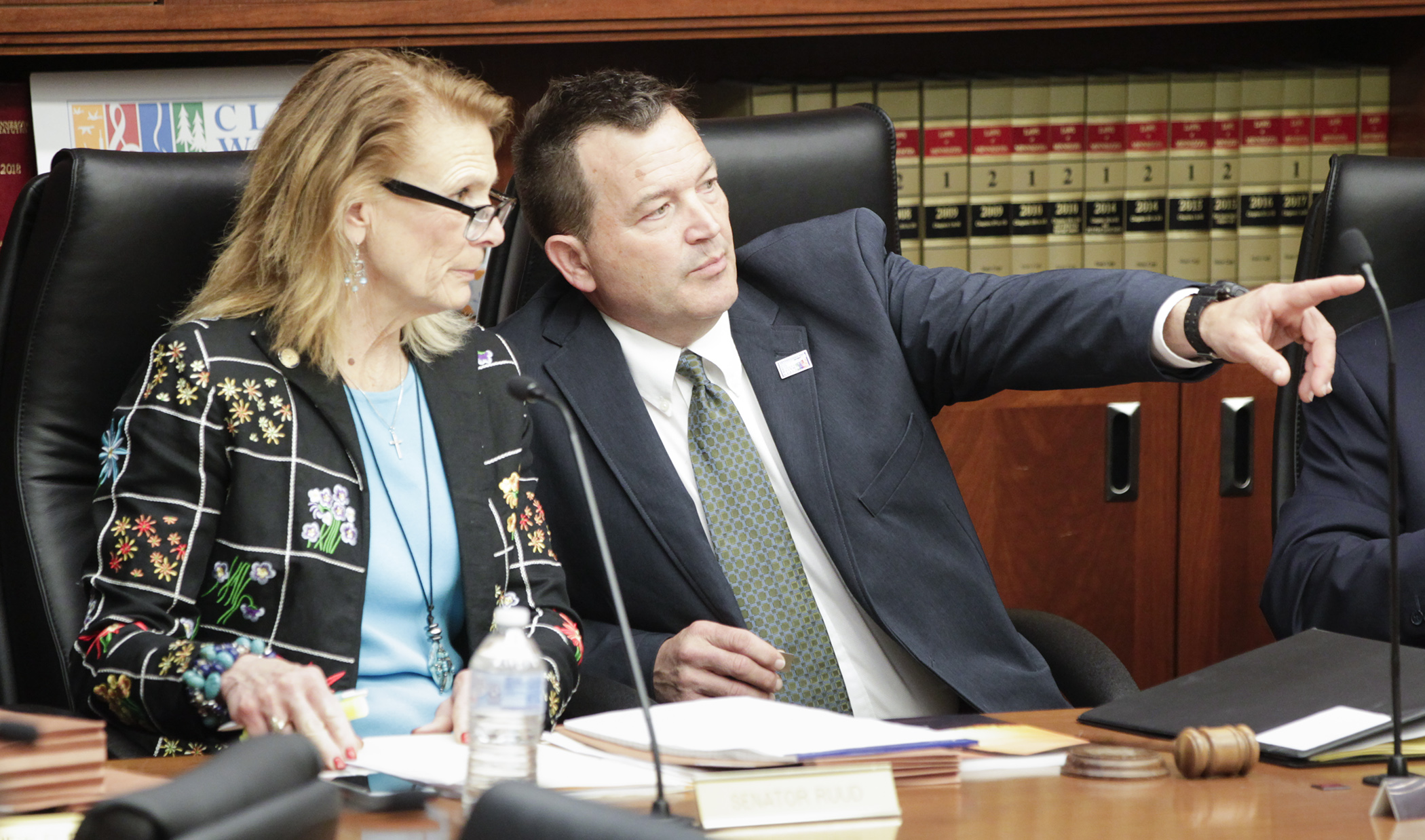Where will the Legacy money go? Conference committee starts talking

How much money is the easy part. Where to put it is up for debate.
Unlike the proposed General Fund appropriations discussed by the governor and legislative leaders, the conference committee on HF653, the omnibus Legacy bill, that convened for the first time Thursday, deals with a different pot of money and has clear, non-negotiable bottom lines on its spreadsheet.
The state’s constitution mandates those totals. The differences arise in who gets how large a slice.
So forging a merger of the House and Senate bills is unlikely to be as contentious as state budget negotiations. But some differences of philosophy and funding need to be hashed out.
Conferees plan to reconvene on Friday and begin discussing the differences.
Its dollars come from the constitutionally dedicated funding source established when Minnesota voters approved the Legacy Amendment in 2008, establishing a three-eighths of 1 percent state sales tax to maintain clean water; protect and restore wetlands, prairies and forests; fund arts and cultural heritage projects; and support parks and trails.
The Clean Water Fund and the Outdoor Heritage Fund each receive 33 percent of Legacy funds, while the Arts and Cultural Heritage Fund receives 19.75 percent and the Parks and Trails Fund 14.25 percent.
Here’s how each bill would distribute money to the four funds:
- $261.26 million for the Clean Water Fund;
- $139.77 million for the Arts and Cultural Heritage Fund;
- $127.69 million for the Outdoor Heritage Fund; and
- $101.26 million for the Parks and Trails Fund.
Funding would be for the 2020-21 biennium, save for the Outdoor Heritage Fund, which receives its 33 percent of the Legacy funds on an annual basis, based upon recommendations of the Lessard-Sams Outdoor Heritage Council.
So where are the differences between the House and Senate proposals for the 2020-21 biennium? Let’s start with one on which they totally agree.
Outdoor Heritage Fund
For this, each bill basically rubber-stamps the recommendations of the Lessard-Sams council. The only difference is that each bill subtracts $378,000 from the council’s proposed $50.5 million for the Conservation Partners Legacy Grant Program.
Clean Water Fund
There are a lot more bones of contention here. The biggest one might be the most controversial measure in the Senate bill: allocating $24 million in grants for soil and water conservation district administration, something that doesn’t appear in the House bill. House funding for that is limited to its omnibus environment and natural resources finance bill.
So where does the House put that money instead? The largest hunk would be the extra $8.1 million to the Department of Health for its “Drinking Water Contaminants of Emerging Concern” program. It also would allocate to the Board of Water and Soil Resources $6 million more for “Targeted Wellhead/Drinking Water Protection” and $4.1 million more for “accelerated implementation.” And the Department of Agriculture’s “Forever Green” initiative would receive $7.5 million more from the House.
Parks and Trails Fund
The funding differences are minimal between the two bills in this category, chiefly because representatives of the Department of Natural Resources and the Metropolitan Council agreed upon a 40-40-20 split for the fund. State park trails and recreation areas would receive 40 percent of the fund, the council would distribute another 40 percent of it to parks and trails within the Twin Cities metropolitan area, and 20 percent would go to parks and trails elsewhere in the state.
Arts and Cultural Heritage Fund
The disagreements are less about funding levels than in which categories to place earmarked projects. But there are differences: The House version would give $1.1 million more to the Indian Affairs Council, mostly for Dakota and Ojibwe language and education projects. Other large differences include the House giving $660,000 more to the Minnesota Historical Society for statewide historic and cultural grants and $500,000 to the University of Minnesota’s Bell Museum of Natural History that doesn’t appear in the Senate bill. The Senate, meanwhile, allocates $500,000 more to the Wilderness Inquiry Canoemobile and $400,000 more for civic education competitive grants.
Any policy differences?
Not too many, but some could prove to be sticking points in negotiations.
In its Clean Water Fund section, the House bill adds the words, “microplastics and nanoplastics,” to some descriptions of what should be tested for in groundwater and drinking water resources, adding a definition, as well.
The Senate bill would form a working group to revisit that 40-40-20 Parks and Trails Fund split, and the House version places several more stipulations on what kind of activities can receive financial support from the Arts and Cultural Heritage Fund.
Related Articles
Search Session Daily
Advanced Search OptionsPriority Dailies
Ways and Means Committee OKs proposed $512 million supplemental budget on party-line vote
By Mike Cook Meeting more needs or fiscal irresponsibility is one way to sum up the differences among the two parties on a supplemental spending package a year after a $72 billion state budg...
Meeting more needs or fiscal irresponsibility is one way to sum up the differences among the two parties on a supplemental spending package a year after a $72 billion state budg...
Minnesota’s projected budget surplus balloons to $3.7 billion, but fiscal pressure still looms
By Rob Hubbard Just as Minnesota has experienced a warmer winter than usual, so has the state’s budget outlook warmed over the past few months.
On Thursday, Minnesota Management and Budget...
Just as Minnesota has experienced a warmer winter than usual, so has the state’s budget outlook warmed over the past few months.
On Thursday, Minnesota Management and Budget...